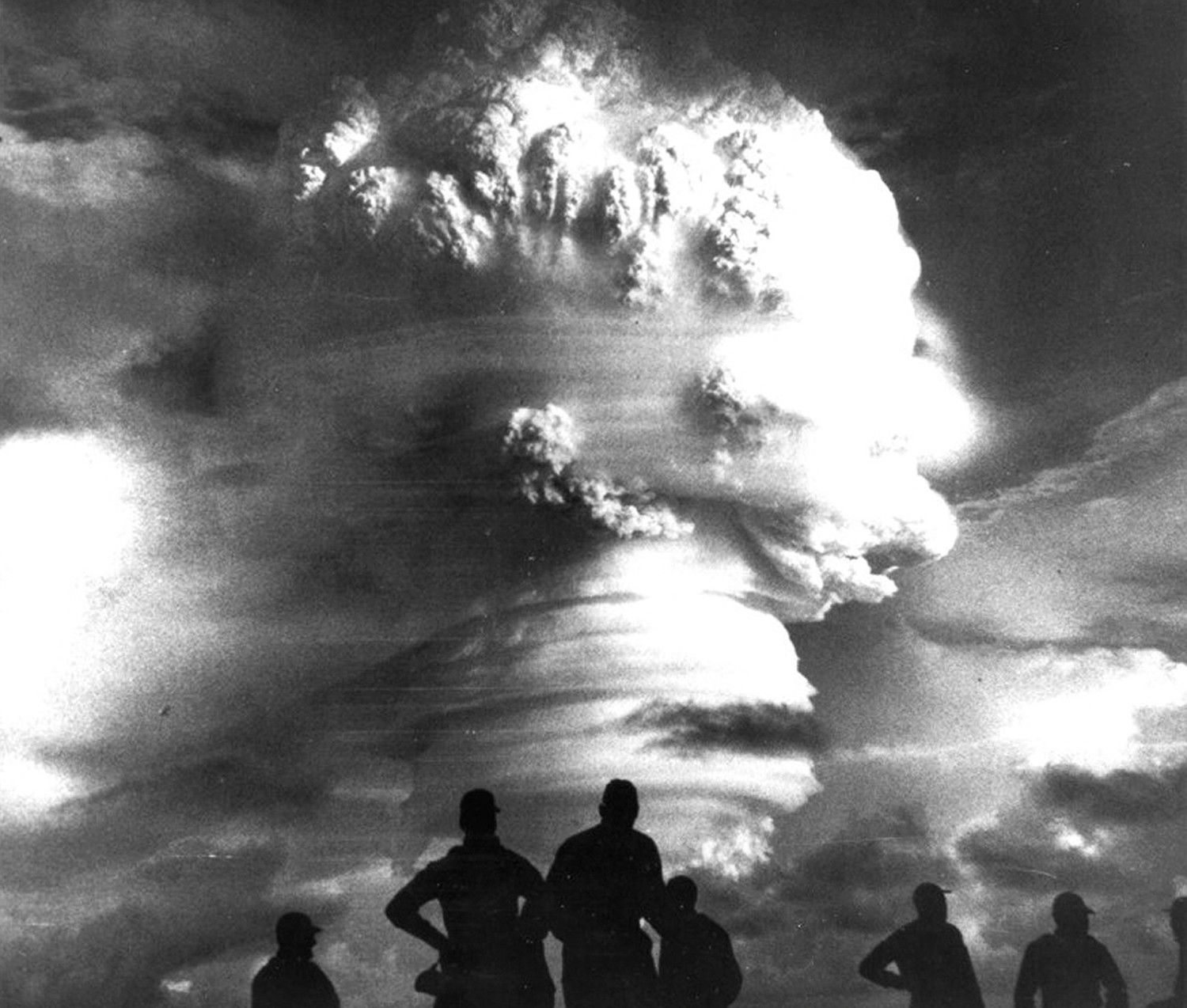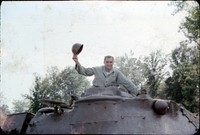A witness to atomic history: Island Park veteran recalls risky service
For roughly 20 years after his discharge, lifelong Island Parker Henry “Mickey” Hastava said he received form letters from the U.S. Army asking him to contact them in the event he started showing symptoms.
Anything from radiation sickness to cancer, they wanted to know about, because for eight months of his two-year stint in the service, Hastava, 81, had stared into the atomic blasts, without protection, recording statistics such as light levels and temperature, and the length and height of the explosions as the waves of heat washed over him.
It was 1958 on the southeastern edge of the Eniwetok Atoll, in what is now the Marshall Islands, where Hastava was stationed during the tail end of the Pacific Proving Grounds nuclear tests of the late 1940s and ’50s. In that year alone, 35 atomic weapons were unleashed on various uninhabited strips of soil and sand captured from the Japanese in World War II, including the Bikini atoll roughly 200 miles to the east, as part of Operation Hardtack I.
Despite the distance, Hastava recalls seeing the halos of light from Bikini’s hydrogen bomb tests — the most powerful ever unleashed — as they peeked over the horizon. Although he was witnessing the most destructive weapons ever devised, at the time, he said, “I didn’t think too much of it.”
Sitting in the kitchen of his stately Suffolk Road home, nervously fingering his flip phone, Hastava was helping organize his local Veterans of Foreign Wars involvement in Island Park’s upcoming Memorial Day parade. He was considering using his car, driving a handful of disabled veterans who would be otherwise unable to march, but if the VFW managed to rent a van, Hastava said, he wouldn’t have to.
The five-bedroom home where he lives with his wife of 56 years, Marie, was recently raised and overlooks the waterfront. Picturesque but empty — it lacks furniture in many rooms because the couple intend to sell — the house matched in some ways Hastava’s description of Eniwetok, where the native inhabitants were forcibly removed ahead of the tests.
“There was nothing,” he said of the landscape of sand and palm trees surrounded by thousands of miles of water on all sides. Army staff there lived in tin shacks with barracks-style toilets, and he said, “The food was lousy.”
Hastava had been drafted while taking night classes in chemical engineering at Hofstra University. Figuring he was good with numbers, Hastava assumed, the Army made him a specialist fourth-class statistician, and he was tasked with recording weapon performance statistics and handling the Army payroll on the side.
After Eniwetok, he was shipped to the Aberdeen Proving Grounds in Maryland, where he was responsible for measuring the effectiveness of guns on artillery pieces and early-model Patton tanks. He also recorded the failure and attrition rates of the gun crews training there, which earned him a letter from a superior commending his work — one of the few records of his service remaining after Hurricane Sandy swept through his home.
Life on base in Aberdeen was much easier than Eniwetok, he recalled. There was a neighborhood nearby with restaurants, so, he said, “I didn’t have to eat Army food all the time.” Plus, he joked, “The girls loved us there.”
After his discharge in 1960, Hastava resumed his studies in chemical engineering, receiving his degree in 1967. He never used it, though, because when he returned to Island Park his uncle Rudy Hastava hired him to work at his insurance and real estate firm. Mickey later assumed ownership of the business. “It worked out better financially,” he said. His office still sits on Long Beach Road, currently run by his two sons.
Hastava met Marie by chance, he said, and added that he tells his children, jokingly “how close they came to not existing.” After returning from a business trip in 1961, he recalled trying to meet a waitress he knew at a bar in Oceanside, but staff there told him that she had been asked to work at the Blue Candle, in Baldwin, that night instead.
So Hastava made the short trip, and while he waited in walked Marie Niedermann — a Levittown native working in Garden City, also in insurance — stopping by to drop a coat off for her friend. She caught his eye, Hastava said, and he asked her to dance. “That’s how it all began,” she said. They were married the next year. “I’m very blessed,” she said of their life together. The couple have two sons and six grandchildren.
Hastava recalled the changes over the years in Island Park: the development of Barnum and Harbor islands, and the conversion of local homes from summer bungalows to winter houses. He learned to drive on Harbor Isle — a field at the time. Now it is covered with residential homes.
He started his own travel agency business, running concurrently with his insurance firm, in the late 1970s, and currently hosts travel tours for seniors with Marie. Additionally, he served as Island Park Chamber of Commerce’s president for 16 years. “I guess nobody wanted the job,” he joked.
Hastava also served as a trustee on the Island Park village board from 2005 to 2014. He still goes to nearly every meeting, rarely asking questions or speaking to others. He said he just wants to see how the current administration is continuing programs that he helped establish during his tenure, such as the summer programs for students at Masone Beach. When asked why he sticks around, he replied simply, “I have an interest.”

 39.0°,
Fair
39.0°,
Fair 







